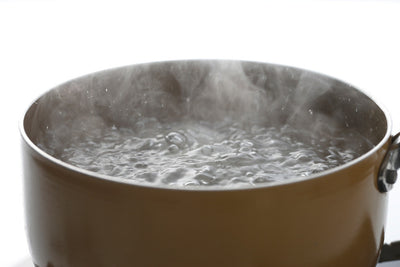Analies Dyjak | Policy Nerd
**Updated September 30, 2020 to include current data
For Hydroviv’s assessment of Norman, Oklahoma drinking water, we aggregated water quality test data provided by the city's Consumer Confidence Report, the U.S. Environmental Protection Agency and supplemental health information. We cross referenced the city’s water quality test data with toxicity studies in scientific and medical literature. The water filters that we sell at Hydroviv are optimized to filter out contaminants that are found in Norman's drinking water.
Chromium 6 In Norman's Drinking Water
Chromium 6 is a highly toxic metal that is currently unregulated by the EPA. Chromium 6 pollution is associated with metal processing, tannery facilities, chromate production, stainless steel welding, and pigment production. Norman, Oklahoma has some of the highest levels of Chromium 6 in the country. In the 2020 Consumer Confidence Report, the city of Norman tested for Total Chromium, instead of Chromium 6 - which is a far more toxic type of chromium. According to test data completed by the Environmental Working Group, the average concentration of Chromium 6 detected in Norman's drinking water was 39,300 parts per trillion. For a bit of perspective, these levels are as high as 1,965 times higher than the concentration determined to have negligible impact on cancer risk. EPA has acknowledged that Chromium 6 is a known human carcinogen through inhalation, but is still determining its cancer potential through ingestion of drinking water. Lung, nasal and sinus cancers are associated with Chromium 6 exposure. Acute respiratory disease, cardiovascular, gastrointestinal, hematological, hepatic, renal, and neurological distress are health effects associated with high levels of chromium 6 exposure.
Arsenic in Norman's Drinking Water
Norman, Oklahoma has a big problem with Arsenic in drinking water. The current levels of Arsenic in Norman drinking water are 14.4 parts per billion. The allowable level (also known as the Maximum Contaminant Level) for Arsenic in municipal tap water is 10 parts per billion. This is the first time in recent years that Norman has had high levels of Arsenic in drinking water. In previous years, Arsenic levels have been 2 parts per billion, which is well below the federal standard.
Chloramine In Norman’s Drinking Water
While most municipalities use chlorine as the primary drinking water disinfectant, Norman’s drinking water is disinfected with chloramine. Chloramine is primarily responsible for what many customers report as the “bad taste” or “pool smell” of tap water. Concentrations were detected as high as 3.9 parts per million in treated water, which is just under the EPA Maximum Contaminant Level of 4 parts per million. Unlike chlorine, chloramine does not dissipate if a container of water is left in the refrigerator overnight. Most one-size-fits-all water filters use filtration media that doesn’t do a great job removing chloramine, but the filters that we design and build at Hydroviv for Norman use a special filtration media that is purposefully designed to remove chloramine.
Strontium In Norman’s Drinking Water
Strontium is an unregulated contaminant that was also detected in this years water quality report. Strontium naturally occurs in certain vegetables, grain, and livestock but is also a byproduct of coal and oil combustion. Concentrations of Strontium in Norman's drinking water were detected as high as 442 parts per billion. For a bit of perspective, this is twice as high as concentrations found in Oklahoma City. According to the Agency for Toxic Substances and Disease Registry, children are the most susceptible age group to the negative health effects associated with Strontium exposure. Bone growth can be effected if children ingest high enough concentrations through drinking water.
It’s important to note that only a handful of contaminants are required to be included in annual Consumer Confidence Reports, and that there are hundreds of potentially harmful unregulated contaminants that aren’t accounted for. If you’re interested in learning more about water filters that have been optimized for Norman's tap water quality, feel free to visit www.hydroviv.com to talk to a Water Nerd on our live chat feature or send us an email at hello@hydroviv.com.
Other Articles We Think You Might Enjoy:5 Things To Know About Chromium 6 In Drinking Water
Chlorine vs. Chloramine: What You Need To Know
2018 Oklahoma City Water Quality Report







